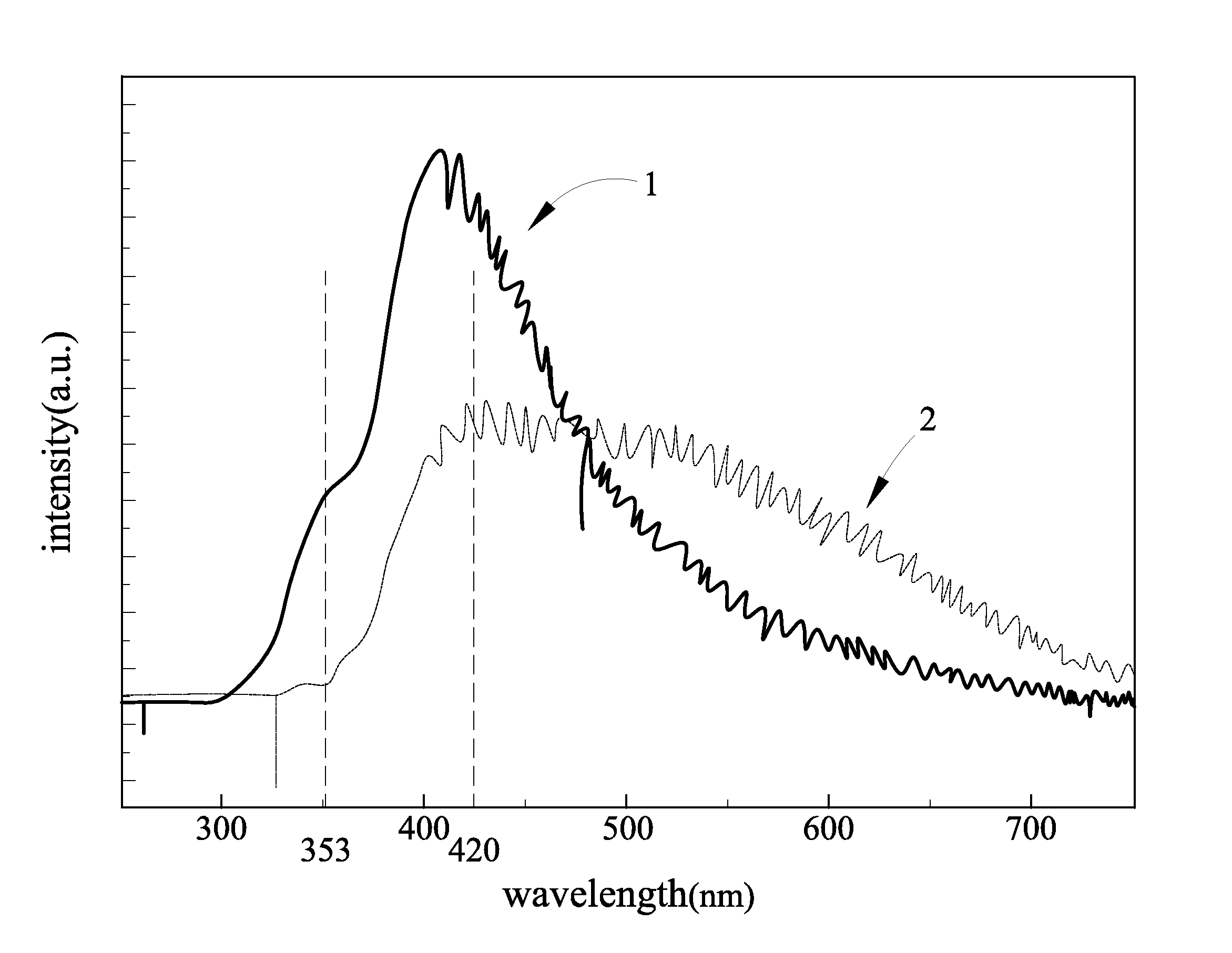P-type transparent conductive oxides and solar cells with p-type transparent conductive oxides
a technology of transparent conductive oxides and solar cells, applied in the field of conductive oxides, can solve the problems of low resistivity, the p-type transparent conductive oxide due to the material nature cannot meet high conductivity, low resistivity, and high optical transmittance requirements, so as to increase the number of electron holes, high hole mobility, and high conductivity.
- Summary
- Abstract
- Description
- Claims
- Application Information
AI Technical Summary
Benefits of technology
Problems solved by technology
Method used
Image
Examples
Embodiment Construction
[0020]Now refer to the drawings for the detailed description and the technical content of the invention as follows:
[0021]Please refer to FIGS. 1 through 3, FIG. 1 is a diagram schematically showing the fluorescence emission spectrum of a preferred embodiment, FIG. 2 is a diagram schematically showing the energy level curve of a preferred embodiment and FIG. 3 is a diagram schematically showing the photoluminescence spectrum of a preferred embodiment according to the present invention. As shown in the figures, the present invention provides a p-type transparent conductive oxide which comprises molybdenum trioxide doped with an element having less than six valence electrons, the element having less than six valence electrons is selected from the group consisting of alkali metals, alkaline earth metals, group III elements, group IV elements, group V elements, transition elements and combinations thereof. In the present invention, because molybdenum (Mo) is a hexavalent material, wherei...
PUM
| Property | Measurement | Unit |
|---|---|---|
| transmittance | aaaaa | aaaaa |
| resistivity | aaaaa | aaaaa |
| optical transmittance | aaaaa | aaaaa |
Abstract
Description
Claims
Application Information
 Login to View More
Login to View More - R&D
- Intellectual Property
- Life Sciences
- Materials
- Tech Scout
- Unparalleled Data Quality
- Higher Quality Content
- 60% Fewer Hallucinations
Browse by: Latest US Patents, China's latest patents, Technical Efficacy Thesaurus, Application Domain, Technology Topic, Popular Technical Reports.
© 2025 PatSnap. All rights reserved.Legal|Privacy policy|Modern Slavery Act Transparency Statement|Sitemap|About US| Contact US: help@patsnap.com



